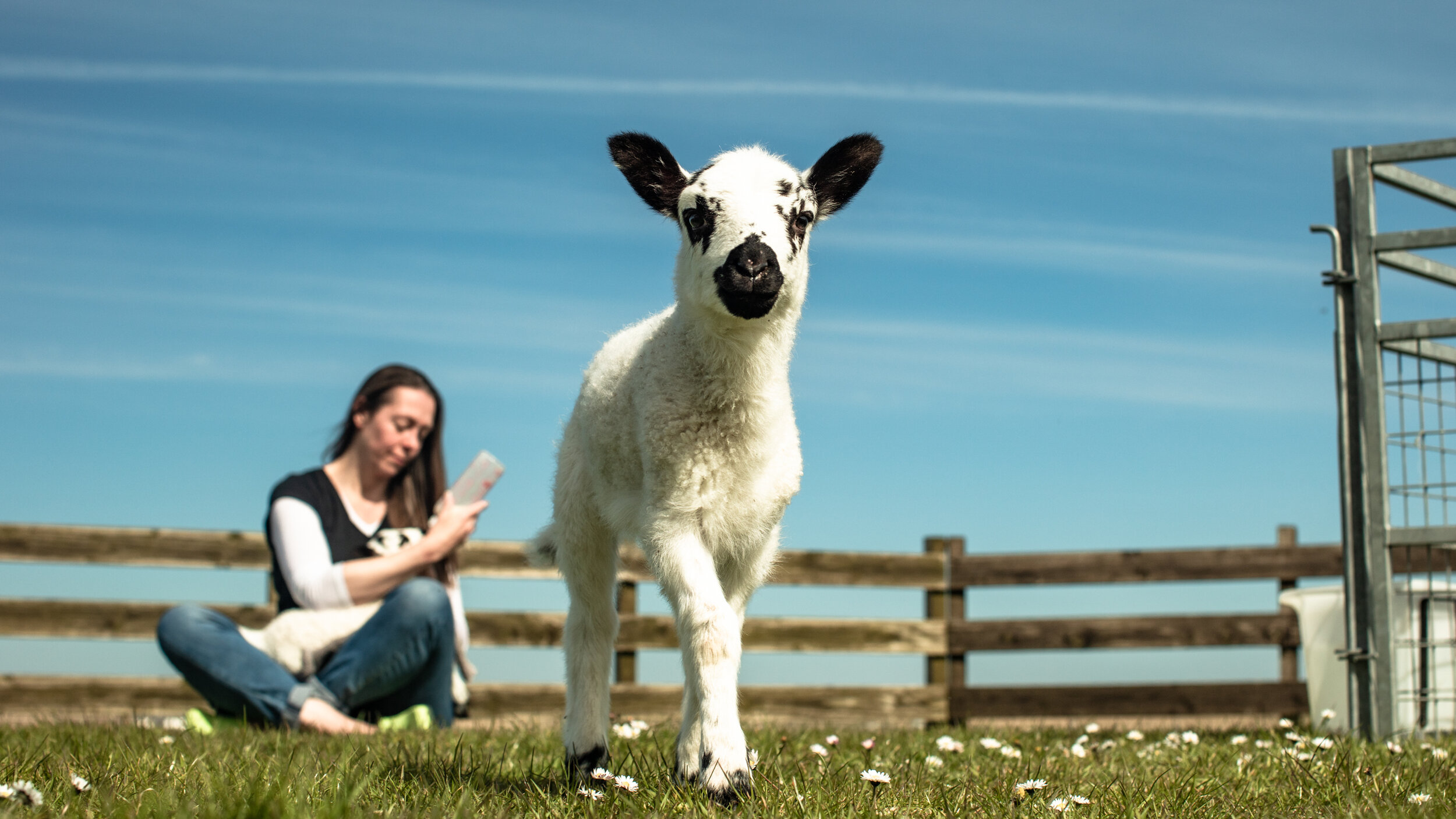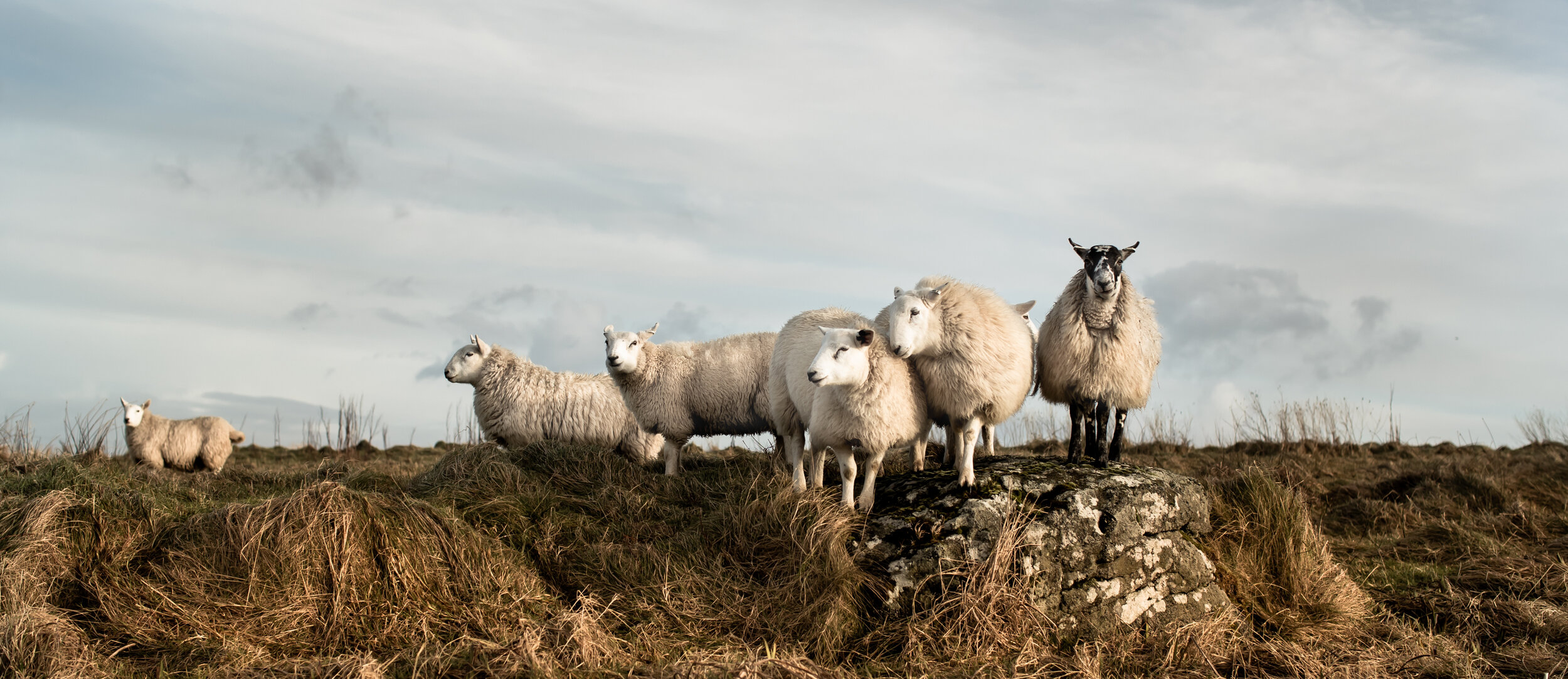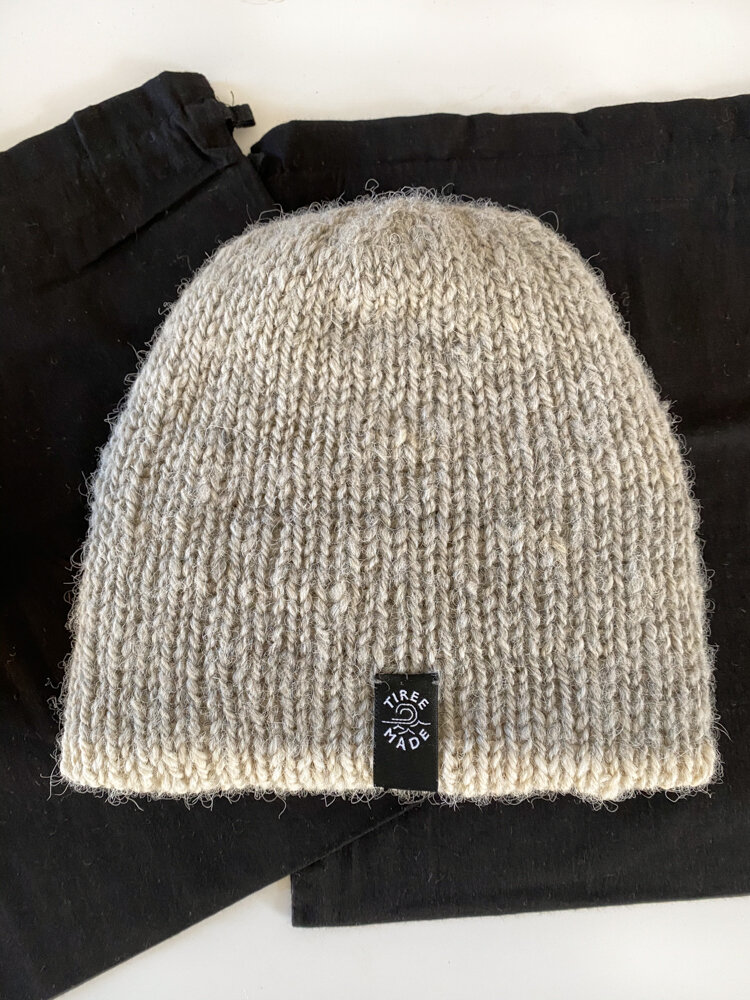Why using wool from our sheep is not cruel. A story of love and sanctuary.
It has not yet been a year since we first launched our wool venture after taking in a little flock of orphaned lambs, but it wasn’t long before a couple angry comments started appearing on our social media posts from individuals, who, it appears, believe that taking wool from sheep is cruel. Though I don’t eat meat myself I had not considered using wool to be a crime. It always seemed like an eco friendly, and cruelty free way of producing textiles – and growing up in a family of hand-knitters, it was just an accepted part of life. So, after a moment of reflection, I decided it to dig a little deeper; to understand where this thought came from and to see if I could build a case to support why I believe using wool from our sheep is not cruel.
The main reason cited for not using wool is that it is unethical. I cannot vouch for every keeper of sheep in the world, but we took in orphaned lambs who were left without their mothers. We rescued them from slaughter. We care for them as well as most humans care for their beloved pets. They have become as much a part of our family as we are to each other. Our sheep have fleeces that never stop growing and to leave them on during summer would be cruel as they would overheat, so we gently take off their winter coats, without harming them. They are free to enjoy the rest of their lives in our fields. Just being sheep.
In order to make a point it’s often easier to generalise, and a lot of the articles I read online appear to put most, if not all, keepers of sheep in the same bucket. No shades of grey. No exceptions. Here are some of the reasons I came across explaining why using wool from sheep is deemed cruel by some people.
Some of the arguments I found online
Sheep are treated atrociously
Sheep are kept in torturous living conditions
Sheep don’t need to be shorn
Sheering sheep is cruel and traumatic
Sheep are killed once they stop growing wool
Acrylic and polyester are better options
You don’t have to agree with me, but this is why I believe using wool from our sheep is not cruel.
1. We give our sheep only the best treatment
Adrian in her stride and feeding Rocky.
Like I said earlier, our sheep are very much a part of our little family. They have all been rescued from slaughter, and welcomed to our home with the most loving of arms. Every single one has a name, and a personality. If you would like to find out more about them, we have a page dedicated to our woolly friends here. Like any other pet, we adore them and their company – as such we endeavour to treat them in the best way we possibly can.
There appears to be a generalisation on the internet that all sheep kept are exploited and subjected to one of the most cruel methods of animal husbandry (a technique called “mulesing”, which effectively means the skin on the backsides of young wool-bearing sheep is removed in large strips). This is, supposedly, to avoid flystrike. What is not mentioned is that in most of the world this method is illegal and that flystrike can be treated very effectively in many different ways without having to resort to those kinds of drastic measures. Flystrike is a really horrendous condition and sheep can die from this infliction, so it is really important it is avoided and treated.
We always endeavour to give our sheep the best (natural) treatment for any ailments they might have. This can be anything from sunburnt ears (you guessed it, rubbing them with eco-friendly sun block), to illnesses and injuries. In the same way you would take your dog to the vet, we well research any methods we use to ensure they are kept in the best possible health.
2. Our sheep are kept in a large field and are well looked after
Jeff sunbathing
This idea that sheep are kept in atrocious conditions, I have noticed, seems to pop up time and time again. It claims that sheep are often kept in “factories”, without exercise, sunlight, fresh air and insufficient food. Again, this concept is often a generalisation of factory farming and does not speak for large subsections of agriculture or indeed our sheep sanctuary.
The principle of factory farming is inarguably inhumane and a condition we could never condone. But in comparison, our little flock live outside in the fresh air, enjoy a lot of sunlight and are not short of food or space. On this small Scottish island, they are at home in what we believe is one of the most beautiful parts of the world – and they have more free space to play in than you could imagine. Creating a healthy and fulfilling environment for them is one of our top priorities, and so making sure their living conditions are the best they can be is essential (And also something we greatly enjoy.)
Wool processing is quite an interesting industry. All our wool must be clean and well maintained before we use it in our hats. Washing can be done post shearing, but to keep our sheep clean and looking that brilliant white you see in many of our pictures, we just have to wait for the weather to change. After a few days of rain showers coupled with wind followed by sunshine, our sheep are sparkling white and fluffy again. Washed and blowdried by nature, and as picturesque as a postcard.
3. Our sheep do need to be shorn
The next argument I came across was that wild sheep don’t grow excessive fleeces and do not need to be shorn. If we travel back in time, we do indeed find that sheep, in their natural state in the wild, grow just enough wool for their temperature to be maintained and protected. Fast forward to today and we no longer have very many wild sheep left in the world. The majority of sheep today are farmed and have been bred for continuous fleece growth. So it may be true that in an ideal world humans never made that change in the first place, but that is not where we are today. Our sheep have to be shorn, as their fleeces don’t stop growing, otherwise they would overheat in summer. We gently remove their winter coat when the time is right, you can almost hear the sigh of relief when all that weight comes off!
4. We sheer our sheep carefully by hand
The next item I found was that sheep shearing mutilates and abuses the sheep. I found the term “being skinned alive” being used. Again, I can’t vouch for all keepers of sheep and have come across some horrendous footage myself online, which are horrifying to us, but here in the UK we have very stringent welfare standards and the sheep shearers we’ve met here in Scotland really care for the sheep and would never hurt them deliberately. Is shearing a long and process? Turns out us having our hair cut takes a lot longer than shearing a sheep. Ours are clipped by hand with traditional shears. There is no noise to speak of and we reassure them during the short shearing process to minimise any stress. Once they’re back on their feet, they soon realise their newfound summer outfit is much more comfortable and jump around with ease and joy.
5. Our sheep get to live their lives out, even after they stop growing wool
Some of the flock chilling in the field
We really hope our sheep make it to 20 years of age, which is unlikely as the average lifespan of a sheep is around 10 to 12 years, though there have been a few recorded cases. Our little flock is free to live out their lives in our field, wool or no wool, we care for them just the same. We can’t imagine life without them!
6. Acrylic and polyester are better options
This warrants a complete article on its own, so keep an eye out for when it lands... If you want to find out more about the benefits of wearing wool, we wrote a blog on that too which you can find here.
Conclusion
Our little flock of orphaned lambs and sheep live happy, well cared for lives. Their winter coat is gently removed once a year to stop them overheating in the summer and we use the wool to make sustainable and eco-friendly hats, so that we can continue to look after them without bankrupting ourselves and so that we can rescue more lambs from slaughter in the future. And that is why I believe using wool from our sheep is not cruel.
















